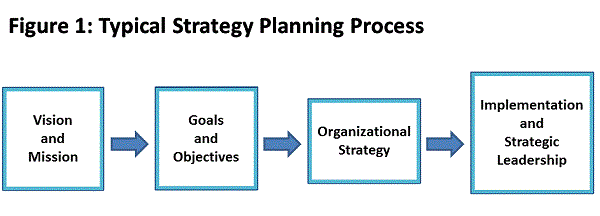ATD Blog
Elevating Your Role in Strategy Planning: How to Get Off the Sideline and Into the Game
Tue Jan 15 2019

As a human capital leader, you need to be an integral part of your organization’s strategy planning process. Unfortunately, that sometimes means booking the room, supplying the flip charts, and typing the agenda. During strategy planning, human capital professionals (HCPs) shouldn’t be standing on the sidelines while strategy is being developed. They should be in the game. But how do you go from bystander to influencer?
Consider using a simple yet effective four-step process, Full-Cycle Strategy Planning, to help your organization more effectively and comprehensively address the SWOT (strengths, weaknesses, opportunities, threats) segment of the strategy planning process. Using this process can improve your organization’s planning initiatives and position you to fully participate in the effort.
Organizations may currently be utilizing some of the process steps in the Cycle, but many are doing so in a segmented or disconnected fashion. Implementing an integrated and complete version of the Cycle can elevate your organization’s capability to plan for and achieve business and people results.
Strategy is defined as the coordinated means by which an organization pursues its goals and objectives. The process typically consists of reviewing vision and mission and setting goals. From this, organizational strategy is created. Once created, action planning, coordinated implementation, and strategic leadership are required for success (Figure 1).

Unfortunately, in some organizations, HCPs aren’t utilized until the very end. What are organizations missing by not engaging HCPs throughout? Lots!
In Full-Cycle Strategy Planning, several talent management processes are linked together, with a business planning component added, to create a seamless strategy planning process that is led by the human capital leaders (sometimes in partnership with the strategy officer).
The beauty of Full-Cycle Strategy Planning for HCPs is that they are already familiar with three of the four processes. The key is the linking of the processes versus taking a segmented approach to each.

As Figure 2 shows, Full-Cycle Strategy Planning consists of four independent processes that are linked together to provide a highly comprehensive analysis of business and leadership strengths, weaknesses, opportunities, and threats, and a road map for strategy and talent planning.
The following is the suggested sequence for conducting and connecting the four processes:
1. The Business Review provides a structured, metric-driven evaluation of the current state and future opportunities of each key business line. Using a predetermined rubric, business lines are reviewed, discussed, and plotted, providing enhanced knowledge of each business line’s current performance and growth potential.
2. The Talent Review provides a structured, metric-driven evaluation of individual leaders. Using a predetermined rubric, leaders are reviewed, discussed, and plotted. This enables organizations to determine their “organizational rights”—do we have the right people in the right seats doing the right things at the right time to get the right results?
3. The Succession Planning Review helps to ensure leader continuity in critical organizational positions. This is done by identifying a pipeline of leaders for each critical position and plotting their readiness for advancement.
4. The Leader Development Planning Review helps organizations build individualized plans for leaders to help enhance their leadership capability. Using a mix of on-the-job experiences, social learning, and formal learning, leaders are developed in a planned and structured manner, greatly enhancing their opportunity for success.
As an HCP, demonstrate your strategic importance and enhance your organization’s opportunity for success by utilizing Full-Cycle Strategy Planning. It’s time to get off the sideline and into the game!
